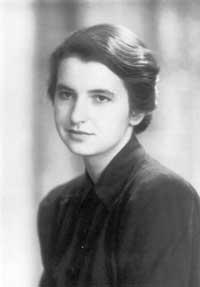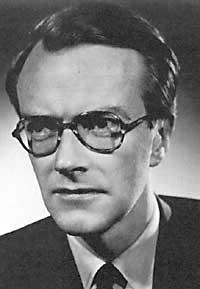Structures of DNA half a century
2003/04/15 Carton Virto, Eider - Elhuyar Zientzia
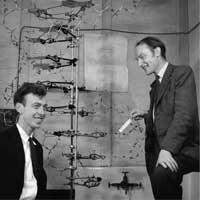
Are they less important than the double helix? It is clear that no. So, why so much imbalance in the celebrations? It seems that the key is in elegance.
The double helix is an elegant structure that has become the icon of modern science. The artists also want it. But 50 years ago it wasn't.
In the years following the discovery, the double helix received no great attention from the scientists. In journals Science and Nature until 1960, for example, few articles that spoke of DNA referred to the structure of Watson and Crick. Curious because then much was investigated about DNA.
However, the relationship between DNA and proteins was not very clear and, above all, they did not know that the production orders were stored in DNA. For Robert Olby, this is why so few cases were given to the structure of DNA. Olby Pittsburg, professor emeritus of Philosophy and History of Science at the University, has collected the aforementioned data.
In the early 1950s, it was known that DNA was the molecule of inheritance. They also knew it is along with proteins in the nucleus, but not all the pieces were joined. They still did not understand that the indicators of the characteristics that go from generation to generation are proteins. Therefore, DNA and proteins were studied in two different lines of research.
Watson and Crick, for example, only spoke superficially about the coding mechanism when they noticed the structure. In 1962 he received the Nobel Prize in Medicine. But the road to that prize was not clear.
A dark history
Research into the structure of DNA is a very dark history. Suitable for a film. Four are the main protagonists: James Watson, Francis Crick, Maurice Wilkins and Rosalind Franklin. In the 1950s, Watson and Crick worked in the Cambridge Cavendish laboratory and used only theoretical models of the DNA structure. Wilkins and Franklin were researchers at King’s College in London who carried out experiments to unravel the structure of DNA.
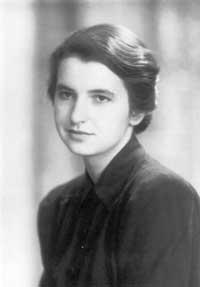
However, Franklin and Wilkins did not fit well and Wilkins sent his partner's data to Cambridge because he had a friend Crick. Instead of working together, Wilkins, Crick and Watson got into Rosalind Franklin's plots to unravel the structure of DNA. Franklin's experiments suggested to Watson and Cricki that DNA should have propeller shape and thanks to it they knew that this propeller was made up of two chains and not three.
However, the concrete structure, that is to say, that the chains are matured equal to bases, was devised by Watson. Franklin was very close, but the bad work environment led him to suspend the investigation and abandon it. He died of cancer in 1958.
Now, coinciding with the 50th anniversary, journalist and writer Brenda Maddox has published an interesting biography of Rosalind Franklin, and in view of what was gathered there, it would not be surprising that it could ever be seen in the cinema.
Once the structure of DNA was clarified, a few years passed since DNA was associated with proteins until the lines of research were unified.
The great step towards the unification of lines was given by astronomer George Gamow. In the last years of his life he began to investigate DNA and proposed a theory on how DNA encoded information. In his opinion, this code was formed by orders of elaboration of proteins. But what was the specific code?
DNA linguists
The DNA was composed of four letters that should be translated into another language of 20 letters, that of proteins. What was the correct combination? The letters of DNA taken from two to two were sixteen choices, therefore insufficient, and three to 64. It could be. But, if so, what trio corresponded to each amino acid? Was only one or more worth?
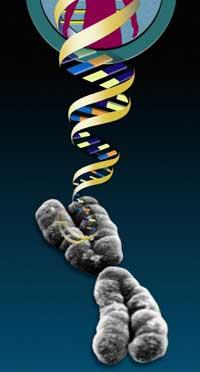
Gamow's proposal aroused great interest among scientists and created a club with twenty scientists to foster communication and friendship and propose and discuss possible codes: Club tie RNA. It was a special club. Each member had a tie with the structure of the RNA and a needle with the abbreviation of the name of an amino acid. This abbreviation was the nickname of his companion. Among others, Watson and Crick participated in this club. It was 1954 and things began to change. Many protein lovers dedicated themselves more to looking at DNA.
Three years later, in 1957, Crick announced the Main Dogma at the symposium of the Association of Experimental Biology: From DNA to RNA, to protein.
In a book he acknowledged that he used the word dogma to draw attention, not knowing what it really meant. Dogma is an affirmation that is considered a basic truth, whether or not evidence. But in this case it cannot be said that Crick has not been tested. Today we all believe in it.
More information: Dossier Human Genome. Updated!
In it you will find: The aspects in which the structure of DNA was defined, the history of Rosalind Franklin, the main milestones of DNA research, what the genome is, what it is, the history of the sequencing of the human genome, the influence of mutations, the decoding of the genomes of other beings...

Gai honi buruzko eduki gehiago
Elhuyarrek garatutako teknologia



